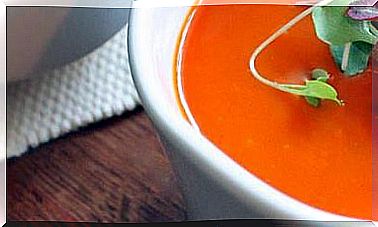8 Plants That Help Control Diabetes
Many plants can be useful to help control type 2 diabetes. Get to know them and ask your doctor how you can combine them with your treatment in an integrated way.

In a few years we have gone from a culture that had to move a lot to get little food to a way of life in which you have to move very little to get food in excess.
Diabetes, obesity, and arteriosclerosis are the answer to that change. In this article we show you some medicinal plants that, together with the treatment prescribed by the doctor, can help control diabetes 2 (not dependent on insulin). Before resorting to any plant, we recommend that you consult a specialist.
Why should you manage diabetes?
The true damage of diabetes stems from the long-term consequences of poor glycemic control : they include retinopathy and blindness, coronary artery disease, kidney failure, erectile dysfunction, amnesia for recent events and neuropathy, and peripheral vascular disease, which can lead to to chronic ulceration, gangrene and amputation.
The pathogenesis of these complications is considered to derive from inflammation caused by hyperglycemia and oxidative stress injury to the vascular endothelium.
The best way to prevent these devastating complications is tight glycemic control.
The benefits of improving both blood glucose levels and glycated hemoglobin have been shown.
The treatment of this disease seems to be based on the great achievements of medication, especially through insulin.
And it is true that it has been important, but the greatest advance has been that the patient knows and controls his own disease, which requires observing himself, regulating his way of life with diet and exercise, establishing his medication and applying it himself, as as the analyst, the endocrinologist, the internal medicine doctor and the nurse did in the past. In addition, medicinal plants can help control diabetes.
Medicinal plants for diabetes
Numerous herbal drugs can be useful in diabetes:
- Chumbera. The extracts of the prickly pear (nopal) are used as food and hypoglycemic agent.
- Bilberry. It contains anthocyanins, which increase intracellular concentrations of vitamin C, act as powerful antioxidants, stabilize capillary membranes and improve blood circulation in the retina.
- Cinnamon. Its extracts have been shown to increase glucose metabolism and trigger the release of insulin. The first study on cinnamon in diabetics showed significant reductions in fasting blood glucose and cholesterol levels.
- Ginkgo (Ginkgo biloba). The extract from the leaves of perhaps the oldest tree species on the planet contains flavonoid glycosides and active terpene lactones that function as antioxidants, free radical scavengers and membrane stabilizers. They also inhibit platelet activating factor, protect nerve cells, and improve vascular function. Although recommended for cerebral vascular insufficiency, the main application of ginkgo in diabetes is in intermittent claudication and peripheral vascular disease.
- Bitter melon (Momordica charantia) . It is a pumpkin-like vegetable that is used medicinally to treat diabetes. It contains various insulin peptides, charantine, and alkaloids that lower glucose concentrations.
- Fenugreek or fenugreek. Its activity resides in the seed and has several mechanisms of action. Its soluble fiber slows gastric emptying and slows the absorption of intestinal glucose. In addition, the rate of insulin release appears to increase.
- Glucomannan. This fiber increases the excretion of lipids in the faeces, intensifies the concentrations of lipids and reduces blood glucose in diabetic individuals.
- Gymnema (Gymnema sylvestre). This traditional Ayurvedic remedy has been found to lower glucose levels ; it is considered to increase the secretion and action of insulin. Both animal and human studies indicate that it helps regenerate beta cells in the pancreas. Caution: causes temporary loss of ability to taste sweets.
Combination therapies for diabetes
Diabetes care requires patient awareness and good medical advice, knowing that important complications such as diabetic ketoacidosis, nonketotic hyperosmolar coma, and other major metabolic disorders can be avoided by caring for them .
The hyperglycemia persistent injured gradually cells, organs and the vascular system.
It is therefore important to control it with all possible means, combining them in a conscious and integrated way, and always consult with the specialist before taking one of these plants.









